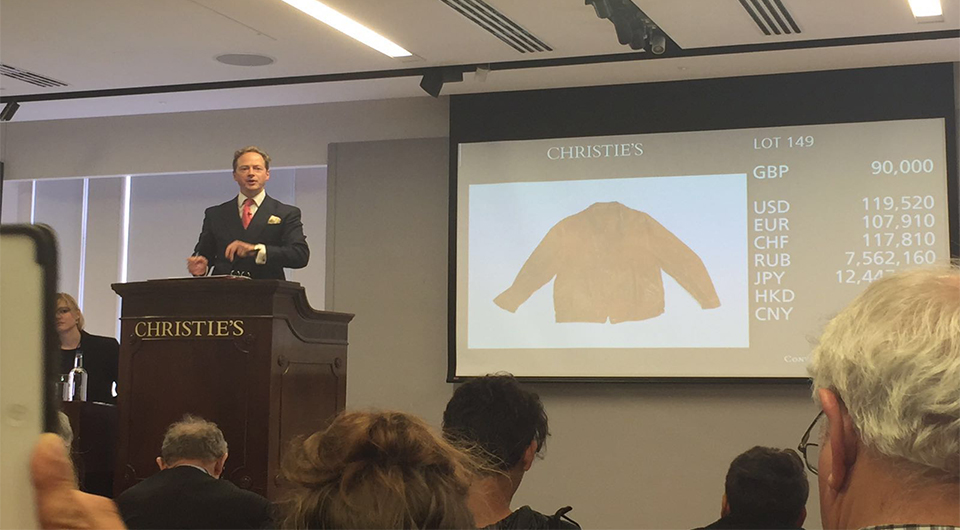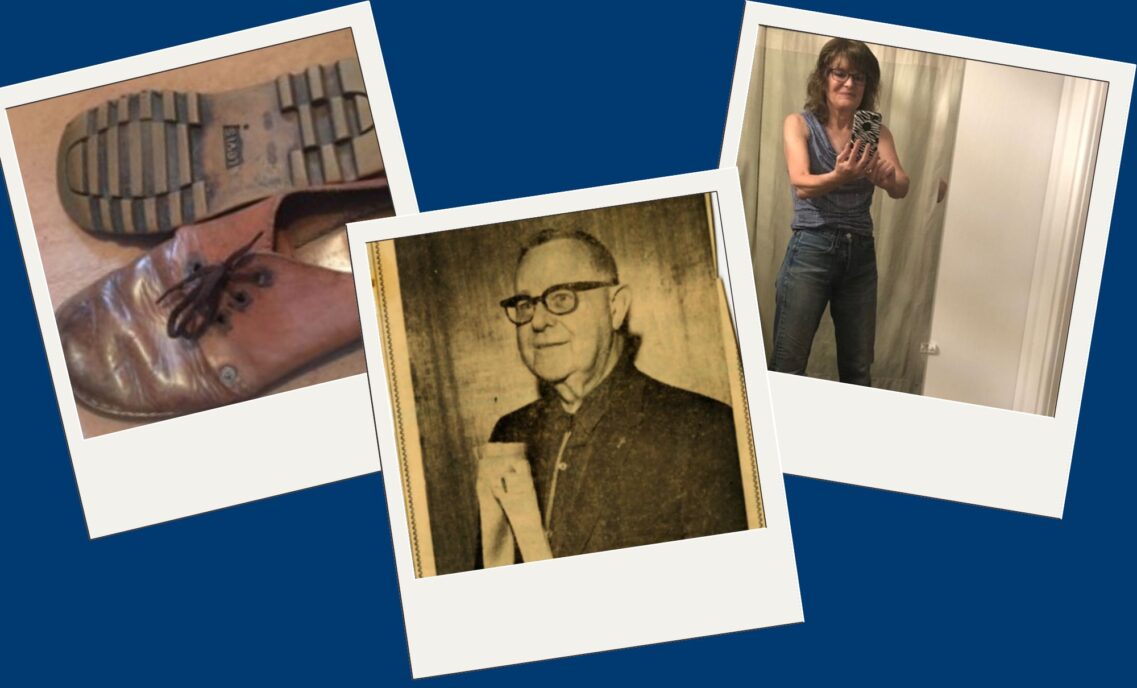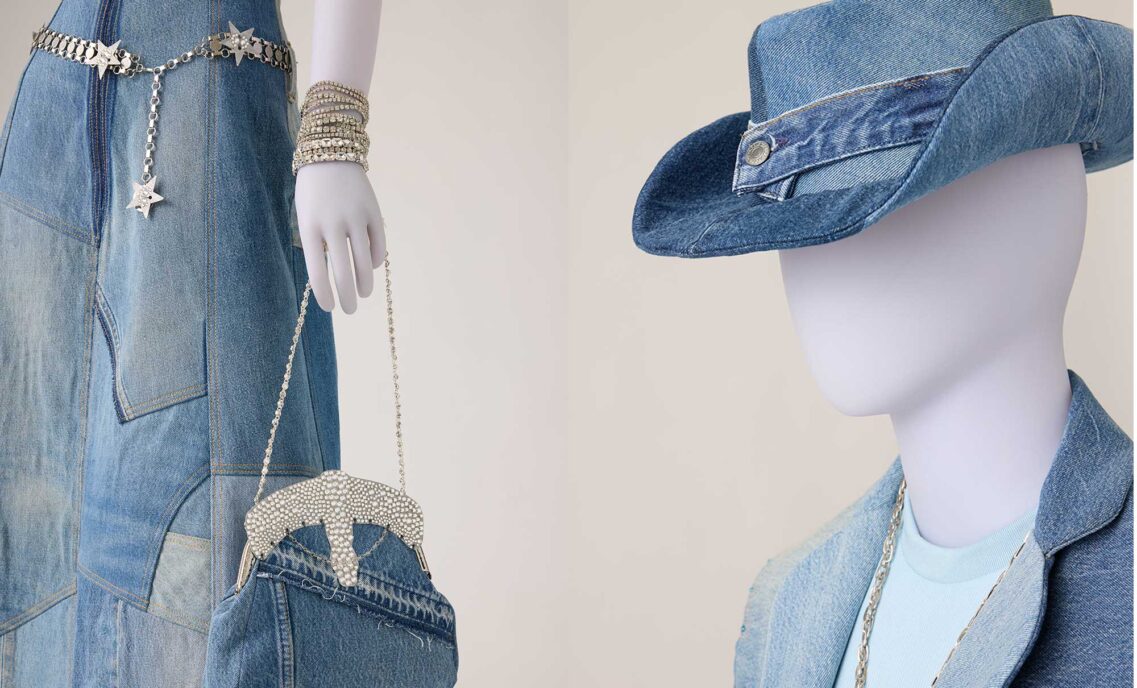Purchasing the leather Levi’s® jacket famously owned by Albert Einstein at Christie’s Auction House in London will probably rank among my most memorable career experiences. While the bidding made my heart race and frazzled my nerves, the result made it all worth it. Here’s what I learned and experienced along the way.
Interest in Einstein’s leather jacket hit the media weeks before the auction. Einstein was photographed in the jacket repeatedly beginning around 1935. This was during the period when he was becoming a naturalized American and purchasing an iconic American brand seemed fitting. Einstein was featured wearing the jacket on the cover of TIME magazine in April 1938—an issue I immediately purchased on eBay for the LS&Co. Archives. Media also reported that the jacket still bore the scent of Einstein’s pipe smoke.
Several people alerted me to the sale. Christie’s also contacted LS&Co. directly. After some initial investigation, I connected with Thomas Venning, Head of Christie’s Books & Manuscripts Department. The jacket, it turned out, would be sold at the same time as a group of rare documents ranging from gold-leaf illuminated manuscripts dating to the 1400s to an autographed Pablo Picasso postcard and a complete music manuscript by Composer Johann Sebastian Bach.
I peppered the Christie’s expert with questions. The most pressing was how to authenticate the jacket, so I asked for a close-up photograph of the Levi Strauss label. To verify Christie’s details, I dug into the LS&Co. Archives. I confirmed that LS&Co. sold this style of leather jacket, dubbed the “Menlo” Cossack jacket, beginning in the early 1930s. The jacket first appears on LS&Co.’s October 1933 price list. Versions were created for men and boys in addition to a “Miss Menlo” coat created for women. I also found a similar men’s jacket among the vintage garments and verified that except for a few minor differences, the labels from both jackets were the same.
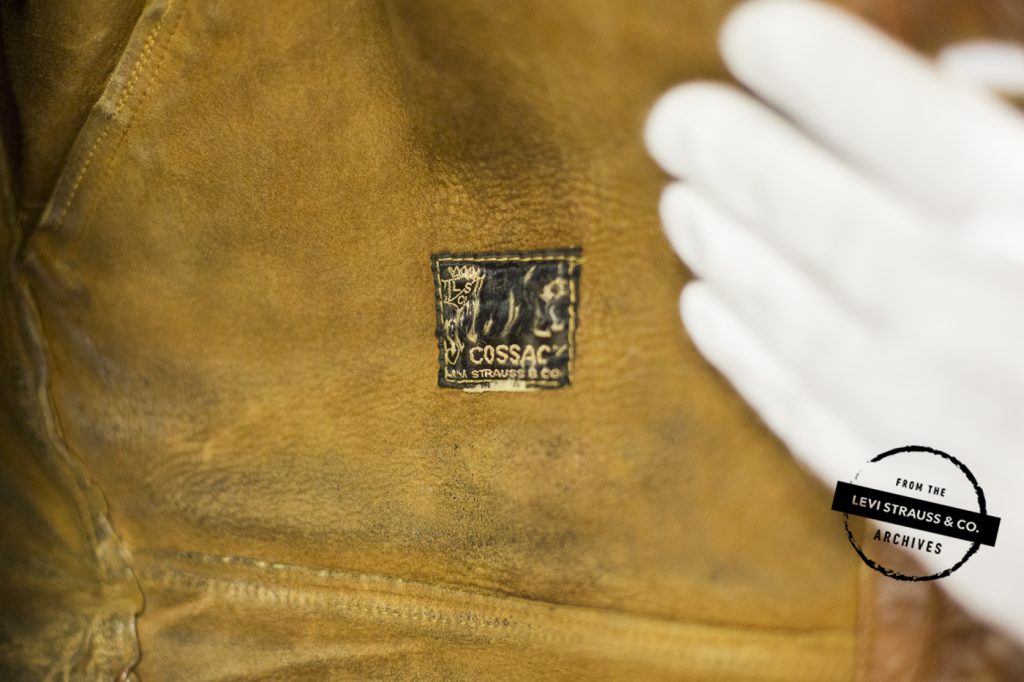
Getting an idea of pricing was another priority. I learned that while it was impossible to know the selling range, I should be prepared for the bidding to go quite high. The auctioneer would set the starting level for the bidding, depending on the published “reserve” (the minimum price the seller is willing to accept). I also learned that on top of the “hammer price” (the final winning bid), there were additional buyer’s premiums.
My other questions focused on details of the auction and Christie’s bidding process. Thomas advised that the “lot” (the term given auction items along with a specific number) would come up around 2:45 UK time on July 13. Outside of bidding in person in London, I had several options. I could bid online or bid by phone, submitting an “emergency bid” authorizing Christie’s to bid in my absence if they were unable to reach me.
By sheer coincidence, I was scheduled to be in London during the week of the auction to deliver five garments to the Victoria & Albert Museum (V&A) for a fall exhibit. I decided to bid in person.
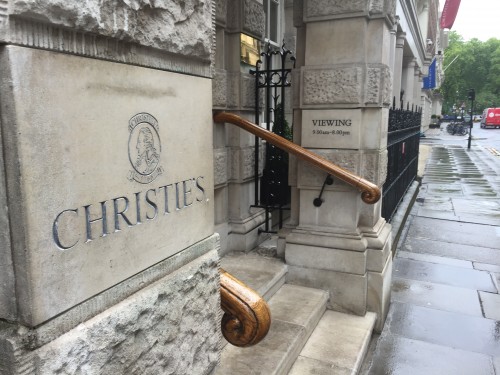
I arranged a preview of the jacket with Thomas the day before the auction. This was my first visit to Christie’s on King Street near Oxford Circus. Inside felt like a stately residence. I was immediately drawn to an exhibit of artwork Christie’s had auctioned off over its impressive history—pieces from Holbein to Damien Hirst.
Still, I remained focused on the Einstein jacket and headed to several rooms before finding it displayed in a glass case paired with Lotte Jacobi’s now-famous Einstein photo enlarged and mounted on the wall. The same room boasted Charlie Chaplin’s cane and the Bach manuscript—both beautifully displayed in glass cases. Thomas found me admiring the jacket and offered to let me take a closer look. I spent nearly 30 minutes chatting with Thomas, inspecting the jacket, tracing the words “Levi Strauss & Co.” on the label and catching a whiff of the garment’s smoky scent.

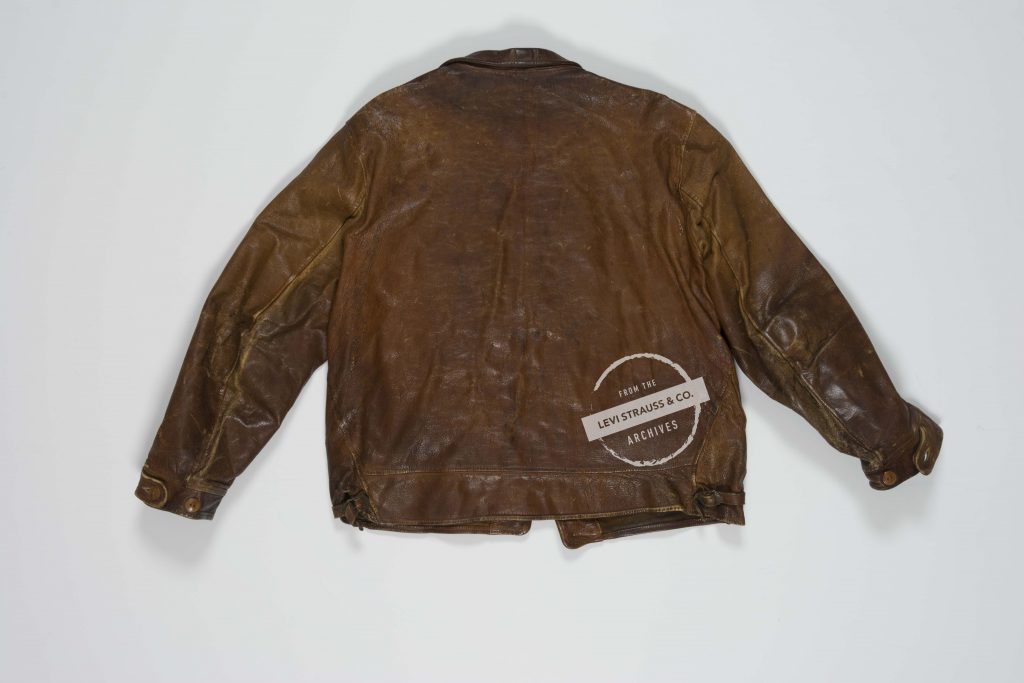
The next day, I hopped into one of London’s ubiquitous black cabs and headed to Christie’s for the auction. I began by registering to bid, sharing my Passport and other contact details. The agent handed me paddle number 97 and directed me to an upstairs room. The space was filled with chairs and an imposing front podium. The Einstein jacket was prominently displayed near the front of the room. A large screen monitor for online bidding was set up near the back and a selection of auction items—including the illuminated manuscripts and the Bach composition—were displayed around the room. I chose a seat near the back, trying to calm my nerves.
People filtered into the auction room, many on cell phones speaking in a variety of languages. Thomas and other Christie’s staff entered and sat at tables reserved for phone bidders on the left-hand side of the room. The auctioneer entered, checked equipment, gathered his gavel, and convened the bidding. A photograph of the lot with the current bidding price was projected onto a large screen with British pounds at the top and converted rates in US Dollars, Euros and others currencies beneath.
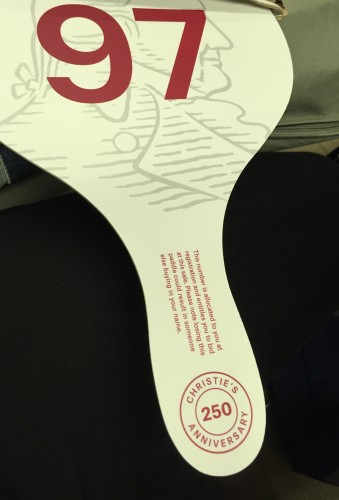
The auctioneer scanned the room between bids. “Brazil at 40k,” he’d call, referring to an offer coming in online. Other times he’d nod to someone raising a paddle or speak the name of a Christie’s agent conferring with a bidder on the phone. By the time the auctioneer reached Lot 129, the Bach manuscript, my heart was pounding furiously, especially once the hammer hit the podium at a whopping $2.8 million.
Bidding for the Einstein jacket began at 28,000 GBP and the auctioneer set the bid increments. I stayed out of the initial bidding, waiting for a pause before raising my paddle. For a time, the bidding volleyed back and forth between myself and someone on the phone. The priced jumped higher and higher until I made one final bid at 90,000 GBP and waited anxiously for the auctioneer to confirm that there were no counterbids. And then the hammer dropped. I felt like shouting for joy when I heard it hit the podium!
Sharing news of the purchase was almost as exciting as the auction itself. Levi’s® London employees awaiting the results in SoHo cheered when they heard the news and congratulatory emails started flooding in. My favorite, which succinctly captures the significance of the acquisition, came from Jonathan Cheung, Levi’s® SVP Global Design: “Brilliant. Well done and thanks so much. What a legacy to leave to the next generation.”
ABOUT THE AUTHOR
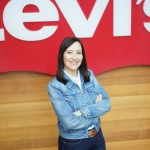 Tracey Panek is the Historian for Levi Strauss & Co. where she manages the day-to-day workings of the Levi Strauss & Co. Archives as a key corporate asset, answering historical questions, assisting designers, brand managers, executives and other employees whose work requires historical materials in the Archives.
Tracey Panek is the Historian for Levi Strauss & Co. where she manages the day-to-day workings of the Levi Strauss & Co. Archives as a key corporate asset, answering historical questions, assisting designers, brand managers, executives and other employees whose work requires historical materials in the Archives.
Prior to joining LS&Co., Tracey spent 14 years as Historian and Archivist at AAA Northern California, Nevada & Utah where she managed a corporate history program for the 100+ year old company. She began her corporate history career at AirTouch Communications—today Verizon and Vodafone—a San Francisco based company that launched cellular service at the Los Angeles Olympics in 1984.
Like this story?
Sign up for the Unzipped newsletter to get the best of the Unzipped blog — company news and views, employee profiles, innovation and sustainability stories, behind-the-scenes and Archives highlights — sent straight to your inbox weekly. Also, be sure to follow @TraceyPanek on Twitter for exclusive vintage photos, historical tidbits and more!



